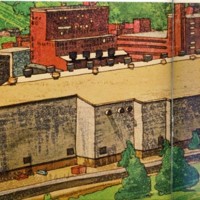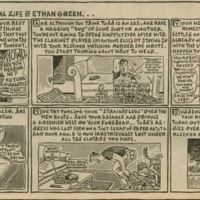Browse Exhibits (27 total)
The Women of Weeki Wachee Springs State Park
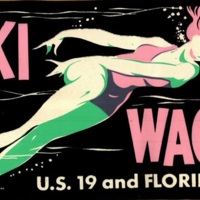
Thanks to the Florida Humanities Council, Rebecca Schwandt, the Friends of Weeki Wachee Springs State Park, and RICHES were able to collect oral histories from former Weeki Wachee Springs mermaids and digitize their artifacts. The following exhibit features a selection of those artifacts, quotes from oral histories, and a history of the roadside attraction Weeki Wachee Springs State Park.
Citizen Curator Project

The Citizen Curator Project of Central Florida invites Citizen Curators to create a series of exhibitions for display at the John C. Hitt Library, the UCF Art Gallery, and online focused on the theme “Eliminationism and Resistance.” A particularly potent example of eliminationism, defined as social policies that seek to censor, suppress, exile, or exterminate others, is the recent Pulse nightclub attack, whereas the Orlando United campaign may be viewed as an act of resistance and reconciliation.
This project was made possible in part by the Institute of Museum and Library Services.
The Institute of Museum and Library Services is celebrating its 20th Anniversary. IMLS is the primary source of federal support for the nation’s 123,000 libraries(link is external) and 35,000 museums. Their mission has been to inspire libraries and museums to advance innovation, lifelong learning, and cultural and civic engagement. For the past 20 years, their grant making, policy development, and research has helped libraries and museums deliver valuable services that make it possible for communities and individuals to thrive. To learn more, visit www.imls.gov and follow them on Facebook(link is external), Twitter(link is external) and Instagram(link is external).
Orlando Remembered
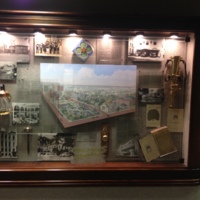
Orlando Remembered, a committee of Historical Society of Central Florida, Inc. is dedicated to preservation of the memories of Orlando, "The City Beautiful," primarily as it was during the period of 1930 to 1950. Founded in 1981 by Don Acito and Andy Serros, Orlando Remembered has partnered with leading businesses, local governments, institutes of higher education, and area historical societies, in their efforts to remember the landmarks of Orlando's past. To date, the organization has constructed and displayed 18 exhibits throughout the downtown area.
RICHES Mosaic Interface, a project of the University of Central Florida's College of Arts and Humanities, currently hosts digital versions based on the Orlando Remembered displays. The online exhibits expand the reach of the physical displays, allowing Orlando's past to be viewed by a wider audience of scholars, students, and the general public.
The Building and Beyond: Orlando's Post Office and Its Evolving Community

From its construction onward, the Downtown Orlando Post Office has been a physical symbol of the growing and evolving city that surrounds it. Opened in 1941, the post office experienced many changes that reflected national and local social and economic transformations. Demographic shifts, wars, economic booms and downturns, and social conflicts were reflected in the history of the Orlando Post Office. This exhibit examines the impact of some of these changes on the building itself and the people who worked there or used the agency's services. Viewing the building over time allows us to see the impact it had on Orlando and to glimpse a reflection of the city itself. The post office building was more than just a government edifice; it became a symbol of the city that surrounds it.
At the beginning of the 20th century, Orlando was remarkably different from the city that is is today. The local economy, which relied on the citrus industry, had survived two devastating freezes in the winter of 1894-1895 to develop into a bustling town by 1900. As growth continued in the 1910s and 1920s, Orlando faced numerous infrastructural and logistical challenges. When the post office at Jefferson Street was conceived in the mid-1930s, it became a symbol of economic revitalization that the city sorely needed in the depths of the Great Depression.
Legends: The Next Generation
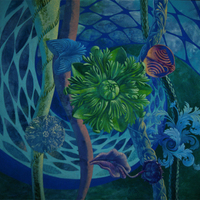
Produced by the UCF Art Gallery, Legends: The Next Generation is an exhibition featuring Central Florida artists Steve Lotz, Doris Leeper, and Bill Orr. The exhibitition runs from September 5 through October 13, 2016.
Art Legends of Orange County: Paintings by Steve Lotz
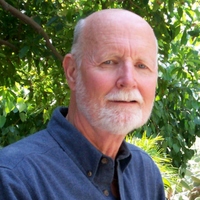
Produced by the Orlando Museum of Art, Art Legends of Orange County: Paintings by Steve Lotz is an exhibition featuring Central Florida artist Steve Lotz. The exhibitition runs from March 12 to June 5, 2016. A public reception will be held on March 12, 2016, at 6:30 pm.
Lotz will also be featured in Art Legends exhibitions at the City of Orlando Terrace Gallery (October 15, 2015 through January 8, 2016), the Orange County Regional History Center (March 5 through May 29, 2016), the Orlando Museum of Art (March 12 through June 5, 2016), and the UCF Art Gallery (September 5, 2016 through October 13, 2016).
Art Legends of Orange County: Orange County Regional History Center

Produced by the Orange County Regional History Center , Art Legends of Orange County: Albin Polasek and Art Legends of Orange County: The Stories Behind the Art are exhibitions featuring Central Florida artists Albin Polasek, Hugh McKean, Jeanette Genius McKean, and art leader Texann Ivy Buck. The exhibititions run from March 5 to May 29, 2016.
Art Legends of Orange County: Crealdé School of Art
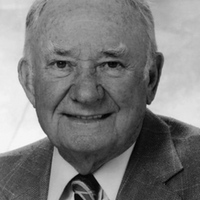
Produced by the Crealdé School of Art, AArt Legends of Orange County: The Inspired Paintings of Crealdé Founder Bill Jenkins, Art Legends of Orange County: The Right of Passage: A Collection of Work by Grady Kimsey from 1940s to the Present, and Art Legends of Orange County: Progressions – Work by Former Students of Grady Kimsey are exhibitions featuring Central Florida artists Bill Jenkins, Grady Kimsey, and Kimsey's students, respectively. The first two exhibitions will be housed at the Crealdé School of Art Main Campus Galleries and the third exhibition will be at the Hannibal Square Heritage Center. These exhibititions run from February 5 through April 2, 2016. A public reception will be held on February 5, 2016, from 7 to 10 pm.
Doris Leeper: Hard Edges
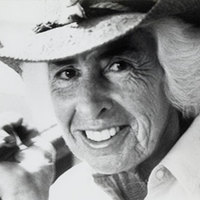
Produced by the Cornell Fine Arts Museum, Doris Leeper: Hard Edges is an exhibition featuring Central Florida artists Doris Leeper. The exhibitition runs from January 16 through April 3, 2016.
Art Legends of Orange County: Smith, Hurt, Orr and Bok – The Grand Experiment
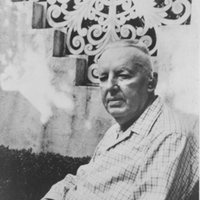
Produced by the Art & History Museums – Maitland’s Maitland Art Center, Art Legends of Orange County: Smith, Hurt, Orr and Bok – The Grand Experiment is an exhibition featuring Jules André Smith, Maury Hurt, Bill Orr, and Mary Louise Curtis Bok and their relation to the Research Studio, now the Maitland Art Center and the area’s only National Historic Landmark. The exhibition runs from January 15, 2016, through February 28, 2016. A free public talk, Gone But Not Forgotten – Deceased Artist and Art Leader Panel, will be held on January 15, 2016, at 5:30 pm, followed by a public reception from 6:30 to 9:00 pm.
Art Legends of Orange County: Friendship - Featuring Art Legend Johann Eyfells and Friend Robin VanArsdol (R.V.)
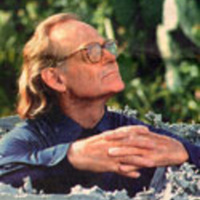
Produced by the CityArts Factory, Art Legends of Orange County: Friendship - Featuring Art Legend Johann Eyfells and Friend Robin VanArsdol (R.V.) is an exhibition featuring Central Florida art legend Johann Eyfells and Robin VanArsdol. The exhibitition runs from December 17 to January 15, 2016.
Art Legends of Orange County: 1932-1982
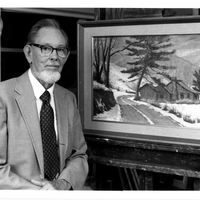
Produced by the City of Orlando Terrace Gallery, Art Legends of Orange County: 1932-1982 is an exhibition featuring Central Florida artists Ralph Bagley, Johann Eyfells, Walter Gaudnek, David Reese, and Harri Klotz. The exhibitition runs from October 15, 2015, through January 8, 2016. A public reception and a free public talk, Living Artist and Art Leader Panel, will be held on October 15, 2015 at 5:30 pm.
Art Legends of Orange County: Judy Albertson and Louise Peterson Artists I, II, and III

Presented at the Orange County Board of Commissioners Chambers (201 South Rosalind Avenue, Orlando), Art Legends of Orange County: Judy Albertson and Louise Peterson Artists I, II, and III are three exhibitions featuring Central Florida art leaders Judy Albertson and Louise Peterson through the artists they represented, including Grady Kimsey and Steve Lotz. The exhibitions run from September 2015 to September 2016. Public receptions will be held from 5:30 to 6:30 pm on September 11, 2015; January 11, 2016, and May 9, 2016.
Art Legends of Orange County: The Art of Hal McIntosh
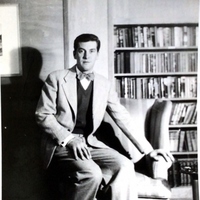
Produced by the Albin Polasek Museum & Sculpture Garden, Art Legends of Orange County: The Art of Hal McIntosh is an exhibition featuring Central Florida artist Hal McIntosh. The exhibitition runs from August 18 to November 29, 2015. Open House will be on National Museum Day, September 26, from 10 am to 4 pm.
McIntosh will also be featured in Art Legends exhibitions at the Orange County Art in the Chambers (September 2015 through September 2016), and the City of Orlando Terrace Gallery (October 15, 2015 through January 8, 2016), and the Orange County Regional History Center (March 5 through May 29, 2016).
Invisible History: Black Life in Oviedo
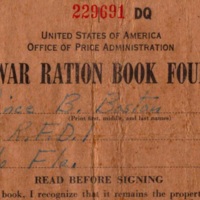
This exhibit explores the lived experiences of African Americans in the small, agricultural community of Oviedo, Florida during the late 19th and early 20th centuries. Nestled south of Lake Jesup and eclipsed by the more populous and urban Sanford to its north, much of Oviedo's history was documented by the town's affluent and white founding families, rendering those who did not fall into either of those two categories historically invisible.
Items collected during the Oviedo History Harvest have helped to illuminate the vibrant black community that developed in Oviedo during the late 19th century. Through curating the metadata for this collection, it became apparent that Oviedo has a long and storied past of African Americans carving out a community for themselves after the Civil War and through the Jim Crow era. They fought for better education for their children and when denied that, they raised funds to create their own school. When denied entry into local businesses they integrated them during the 1960s through acts of civil disobedience.
Stories such as these are hidden across the country, and if not for the Oviedo History Harvest and the willingness of the local community to share these stories with us, they would never become part of the larger narrative of African-American endurance in the face of racial oppression.
A Transformed Block: The Development of South Orange Avenue
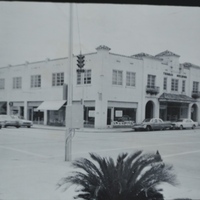
Florida’s development boom came late. When it did come, it came in fits and starts. The citrus and cattle industries, as well as the climate, created a relatively static economic environment, but true growth and progress would wait until well into the 20th century. As the world fell into war in the 1940s, Florida answered the call to serve as a training ground for the aviators of the Allied forces. World War II changed much of Orlando's future when a large migration boom occurred after the war’s end. Infrastructure that developed during the war period helped give Orlando a foundation to grow upon. Yet, construction in Orlando, like many other locations in Florida, did not exceed the military's plans until after the war was over. The servicemen and servicewomen returned to Florida after the war due to its attractive climate.
Like Florida, Orlando’s growth was slow. Coastal cities, such as Tampa and Miami, benefited from tourism early on, but Orlando’s central location kept it more or less a typical southern Florida town until Walt Disney World arrived in the 1970s. The local community was strong, with no need for growth outside of the city limits. One need only look at a single city block to see that the City of Orlando had a little bit of everything and enough to thrive. The subject block, bounded by South Orange Avenue, East Jackson Street, South Main Street (present-day South Magnolia Avenue), and East Church Street in Orlando, was a basic block that played a part in the lives of residents in the 1940s, as there were a myriad of goods and services available to the public. As the city grew, the block transformed in the early 1960s from its original character into a central business district containing more office spaces and parking lots that reflects the later development of the city.
Up From The Ashes
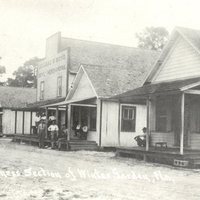
The Winter Garden that IS today owes much of its success to the Winter Garden that WAS at the early part of the twentieth century. Many of the brick buildings we still enjoy today were constructed after two significant fires in 1909 and 1912 destroyed the fledgling downtown business district. These buildings are solid proof of the "up from the ashes" determination of the city's early pioneers to restore the city, despite calamity.
The Winter Garden Heritage Foundation and the City of Winter Garden invite you to enjoy an exhibit of rare photographs, selected from historical archives and family collections, that depict downtown Winter Garden as it appeared just before and after the fires.
The Winter Garden Heritage Foundation is a non-profit organization that preserves heritage and architecture and provides inspiring cultural experiences in West Orange County. The organization operates two museums, offers a variety of engaging educational programs, maintains a local history research library, and hosts events that bring people to Winter Garden's National Register Historic District.
Orlando Public Library
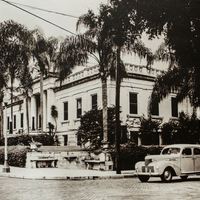
Descending the steps of the Albertson Public Library after several hours of reading, the glare of bright sunlight and the thick, humid air envelopes you. It is summer 1945, and air conditioning has not yet arrived in Orlando.
You stop for a drink at the public fountain on the corner of Rosalind Avenue and Central Avenue (present-day Central Boulevard), but the water is warm and a cold soda at Wayne Moses’ Corner Canteen up the street seems far more appealing. You start back up Central Avenue.
As you walk by the Salvation Army building, you hear a group inside practicing for the regular Saturday night street corner service. Drums, brass instruments, and the distinctive beat of tambourines fill the air as you stroll by. You notice that the cornerstone on the building indicates that it was built in 1922 and originally served as the First Christian Church.
A few steps further and you reach the Orlando Chamber of Commerce Building. This notable landmark is the focus of nearly every civic and social activity in town. Rotary, Kiwanis, Lions, the JayCees (Orlando Junior Chamber of Commerce), Business and Professional Women, Exchange Club, and other organizations have their meetings here. Office space is also provided for the Orlando Florida Association of Real Estate Boards.
A peek inside the handsome building lures you toward comfortable sofas and chairs in the center of the main room. The architectural style is Moorish, with the thick stucco walls and columns set off by ornate wrought iron handrails.
At the rear is an elevator, one of the few in town. It can whisk you all the way to the fourth floor (although the ride is not quite what one might call a whisk).
Orlando’s first library opened in 1923, due largely to the influence of The Sorosis Club, which lent books before there was an actual library. Our first library was named for Captain Charles L. Albertson, a retired New York City police inspector who contributed a large collection of books.
Some will remember that it was Miss Olive Brunbaugh who served as Orlando’s first librarian from 1923 to 1943. Miss Clara Elizabeth Wendel served as librarian until 1970.
The new library, considered one of the finest in the nation, was completed in two stages:
The first stage opened in 1966. In 1984, under the supervision of the library's current director, Glenn Miller, the second addition was completed, greatly increasing its size. Glenn Miller was appointed in 1969.
The Orlando Public Library now covers a city block and is part of the Orange County Library System, which employs several hundred persons here and in nine branches.
Located in a converted home, the Young Women’s Community Club, a strictly operated hostelry for young, single girls is next, and beside it is Chief Bennett’s home. Mrs. Anne Parker’s home is just beyond his. It will eventually become the Salvation Army Women’s Emergency Home. The last home facing Wall Street is that of Mrs. Cleole Dasher.
Reaching Rosalind, as you head toward the library, you pass the home of Lea Hurlburt. Samuel S. Morrison will later occupy that home. Strolling by the office of the beloved physician, Dr. Frank Gray, you round the corner, passing that warm water fountain on the return trip to the library.
That cold soda still beckons you to Wayne Moses' refreshment stand on the corner. This shop shares the same busy location with the filling station owned by Sam Shriver, a one-time Justice of the Peace in Orange County. Mr. Shriver's station sells Shell products and gives good old-fashioned service.
The cold drink is refreshing. You decide to continue around the block on your return to the library.
As usual, some of the guys at Fire Station No. 1 are polishing the trucks while others are playing checkers to stay busy. You can swap a story with Chief Maxie Bennett. If he is not there, you might find him at 130 Wall Street, his home, just around the corner.
The red brick building at the corner of Main Street (present-day Magnoliva Avenue) and Wall Street is the Orlando Utilities Commission, where you pay your water and light bills and have service started or stopped, depending on the time of year. Some folks who go away for several week in the summer order their service discontinued to save money.
—Orlando Remembered Library Exhibit
Orlando Regions Bank
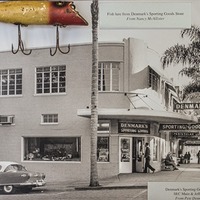
In its hayday, Sears, Roebuck & Company was the leading retailer of the nation, if not the world. Small wonder then that Orlando felt it was destined for greatness when, in 1931, Sears entered the Orlando merchandising field. Sears obtained a 15-year lease on the Phillips Apartments at 115 North Orange Avenue. The retail store occupied the first floor, and Sears continued to operate the hotel and apartments that existed on the two upper floors.
A few years before Sears came to town, a well-known local entrepreneur, Claude H. Wolfe, Sr., became the new owner of Frigidaire Sales & Service at 19 East Washington Street, around the corner from Phillips Apartments. A lifelong booster of downtown, Wolfe accomplished a great deal as President of the "get-things-done" Jaycees (Orlando Junior Chamber of Commerce) and, as Chairman of the Orlando Parking Authority, built five downtown parking lots.
Business at Sears was so lucrative that, three years after the store was opened, it had to triple the size of its retail space at a cost of $60,000. In 1939, the Sears building was sold for $300,000; but Sears remained in that location. In 1959, the property was sold again; this time for $1.1 million. In 1962, Sears bought 30 acres on East Colonial Drive for a new store and announced its downtown store would remain open; and it did until 1974.
Walking around the corner from Sears in 1951, you first encounter Wolfe’s Frigidaire Store on Washington, then Valet Press Shop—which could put a sharp crease in your pants while you waited—and next to that, the Yellow Cab office. Looking at the Cathedral at St. Luke on the left and at St. James Catholic Church, its rectory and offices on the right side of the street.
At the corner of Jefferson Street and Orange Avenue—the block containing Sears—you encounter the Kiddie Korner, which has furniture and children’s clothing. Next, as you proceed north, is one of the early appliance dealers, Associated Stores of Orlando, and then Glen Spears’ Fine Men’s Store. Then, there is Berkman and Sons Jewelers, followed by Brenner’s Women’s Clothing. Adjoining is Biggs-Louis, Inc., which eventually became Gibbs-Louis, the finest women’s store of its day. Biggs-Louis encompassed Thomas J. Baynham Shoes as well as Beauty Bar Cosmetics. And right next door is Sears, from whence we started.
—Ormond Powers
Transformation: From Civilian to Sailors
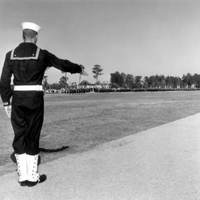
This exhibit will examine how the former Navy Orlando Recruit Training Center (RTC Orlando) transformed raw recruits into highly effective sailors. This process took place over an intensive eight week training period, commonly referred to as boot camp. RTC Orlando occupied roughly one half of the former Orlando Naval Training Center (NTC Orlando), which was located at present day Baldwind Park, Orlando. Between 1968 and 1994, over 650,000 men and women graduated from RTC Orlando. Using photo evidence and oral interviews obtained from former recruits and instructors, this exhibit will help show how this process unfolded and why so many recruits call this the most important time of their lives.
Central Florida Railroad Depots
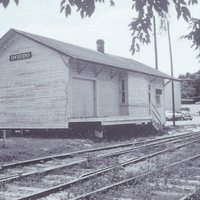
Digital exhibit created by Dr. Connie L. Lester’s American Economic History class during the Spring Semester of 2014 at the University of Central Florida. The class project entailed a digital exhibit demonstrating the role of railroads, and specifically railroad depots, in the economic life of Central Florida communities. Each student was responsible for one railroad depot, documenting the historic and current economic impact of the depot to the surrounding community. Documentation included historic and current images, economic development statistics, and historic analysis.
Long and arduous journeys by watercraft or stagecoach were the only methods of travel and transportation of goods in Central Florida before the advent of railroads in the 1830s. Following the American Civil War, railroads expanded further across the peninsula, eventually becoming a fully established system by the 1880s. The efforts of Henry Flagler (1830-1913) in the eastern coast and Henry B. Plant (1819-1899) in the central and western portions of the state were largely responsible for the rapid development of the railroad, which connected virtually every major city and town by the 1890s. Although the railroad network peaked in the 1920s, with a number of cities being serviced by multiple lines, the rise of the automobile, air travel and the Great Depression contributed to its decline during the 1930s and 1940s.
SUGGESTED READING:
Mulligan, Michael. Railroad Depots of Central Florida. Charleston, SC: Arcadia Pub, 2008.
Murdock, R. Ken. Outline History of Central Florida Railroads. Winter Garden, Fla: Central Florida Chapter, National Railway Historical Society, 1997.
"RICHES Podcast Documentaries, Episode 25: The Railways of Central Florida." RICHES of Central Florida. https://richesmi.cah.ucf.edu/omeka2/items/show/2477.
Turner, Gregg M. A Journey into Florida Railroad History. Gainesville: University Press of Florida, 2008.
Turner, Gregg M. A Short History of Florida Railroads. Charleston, SC: Arcadia Pub, 2003.
Turner, Gregg M. and Seth H. Bramson. The Plant System of Railroads, Steamships and Hotels. Laurys Station: Garrigues House, Publishers, 2004.
Vibrant African-American Community in the 1920s and 1930s

This exhibit is an exploration into Carol Mundy's extensive collection of 19th- and 20th-century African-American memorabilia from the Apopka area of Central Florida. It provides a snapshot into life within the African-American business community. This collection challenges our preconceived notions of how African-American communities lived in this time period. The entrepreneurial and community spirit thrived despite oppressive conditions.
Hidden in Plain Sight: A Selection of Central Florida Monuments
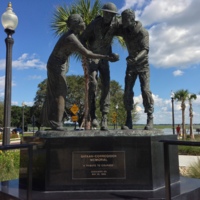
Central Florida is a unique place. Diversity exists throughout the spectrum of population, neighborhoods, tourism, and attractions. Because of our uniqueness and seemingly never-ending list of things to do, we tend to overlook the things that make us unique. We tend to overlook our past. We walk through parks, down the street, and around lakes, catch a glimpse of a commemorative plaque or statue, but it stops there. Central Florida is rich of monuments and memorials, yet very rarely do we know why it is there and who put it there.
Our small University of Central Florida Public History class selected a number of memorials and monuments around Central Florida. We found busts, markers, structures, and statues that stand tall. Some of these are obvious, but others are hidden amongst the brush. We had no idea what we would find in regards to these gems; some of us found very little, but others found gold. We found that monuments in places like Kissimmee, Lake Eola, and Sanford offer a glimpse into our past that has been overlooked, and in some cases untouched. Through the history of our monuments and memorials, we have been able to gauge social sentiment, populations, but more importantly, the reasons why our predecessors have commemorated what they have.
Our sampling in no way represents all of the history Central Florida has to offer, but we can offer you a glimpse and hope that you dig further through the history our region has to offer. Come into our exhibit and look through our shared past and see what was important, and what has been forgotten. Come in and see for yourself a familiar statue to which you can finally give meaning. Come in and see Central Florida in a new light— a light that will take you through the years and the changes of our region.
Origins of the Celery City (1877-1913)
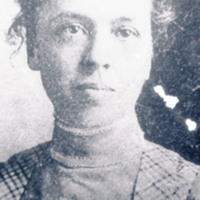
"The Origins of the Celery City" is an exhibit that follows the history and progression of the city of Sanford from its incorporation in 1877 to its ascendancy as the seat of the newly formed Seminole County in 1913. The story of prominent Sanford photographer Jefferson Clay Ensminger and his family, serves as a framing device for the exhibit's narrative. Ensminger moved to Sanford from Iowa in 1884, and soon befriended the aging Henry Shelton Sanford. Ensmigner would remain in Sanford until his death in 1912, his daughter Carrie attended the Little Red Schoolhouse and later became an educator at Sanford Grammar School. The exhibit is primarily based on a series of photographs and portraits taken by Ensminger himself, or scenes of life in Sanford between the 1870s and 1910s. Prominent businessmen like W.H. Underwood and J.N. Whitner are featured. Educators such as Clara L. Guild and Carrie Ensminger help to tell the story of Sanford's education system. Key turning points within the city's history are also explored, events such as the "Sanford Fire of 1887" and the "Great Freeze of 1894-95", are explored. The region's transition from the use of steamboats as its primary mode of transportation to the arrival of the Atlantic Coast Line and Central Florida Railroad, further influenced the city's progression into becoming one of Central Florida's most important cities.
Politics, Tourism, Education, Non-Profits...Oh My!
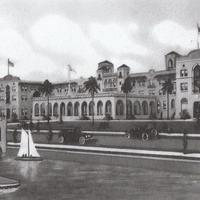
Politics, Tourism, Education, Non-Profits...Oh My! is a photo exhibit depicting the history of the New Tribes Mission building from a hotel to a charity headquarters.
